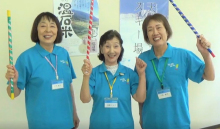Community based social innovations for healthy communities in Japan

October 2017 - May 2018
Osaka University
Principal investigators: Prof Yasuyuki Gondo and Dr Saori Yasumoto, Graduate School of Human Sciences, Osaka University, Japan
Japan
Background
Ensuring fiscal and financial sustainability of the health and social care system is regarded as an important policy goal. In several high-income settings, such as Canada, Japan, Norway, Sweden and Switzerland, there is a preference for staying in communities as one ages rather than institutional care. This has resulted in greater numbers of older persons living in the community. This trend requires different arrangements and social networks to care for the needs of older people.
Community-based social innovations (CBSIs) are one type of innovation that may help to address the needs of older people. Previous research and consultations have defined the principles underlying CBSIs: the empowerment of older people to care for themselves, social inclusion, and maintaining wellbeing. This project explores the context of CBSIs in Japan, where the population has the highest life expectancy globally, and the population of 85 years and older is increasing.
Goal
To provide a better understanding of community-based social innovations in Japan, their scope, how they connect health and social services, and community impact.
Methods
-
Participant observation at three communities in Northern Hyogo Prefecture, including one urban programme, one farming and one fishing community.
-
Ten in-depth qualitative semi-structured interviews with local government officials and community leaders and three focus group discussions with community members.
-
Analysis was done using the Grounded Theory approach.
Findings
-
Older people are not homogeneous. There are distinct behavioural and generational differences between those younger than 75 years and those 75 years and older, for example.
-
Exercise-based activities are critical; however, such activities may need to be better adapted to people with mobility challenges.
-
Among the communities, older people were given a more prominent voice. Policy makers and formal services became more aware of their needs and activities.
-
While many older persons are female, men are also ageing, and activities may need to be tailored to their needs.
-
Sustainability remains an issue, and activities are highly dependent on a few resourceful and charismatic leaders.
Related PDF downloads:
- Document
- Document

